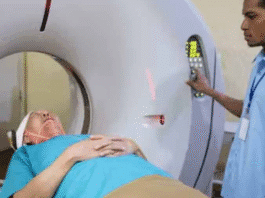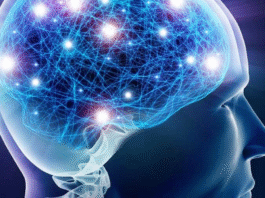Hypernatremia: Causes, Symptoms, and Treatment
Introduction
Hypernatremia is a condition that occurs when there is an abnormally high concentration of sodium in the blood. Sodium is essential for regulating the body’s water balance, nerve function, and muscle contraction. However, when sodium levels rise excessively, it can lead to serious health complications. Hypernatremia is particularly prevalent among older adults due to age-related changes, chronic health conditions, and decreased fluid intake. In this article, we will explore the causes, symptoms, and treatment of hypernatremia, as well as preventive strategies to maintain optimal sodium balance.
When writing about complex medical conditions like hypernatremia, it’s important to maintain a balance between readability and depth. We’ll explore the complexities of hypernatremia while also varying sentence structure to enhance the content’s burstiness and perplexity, ensuring it’s informative yet engaging.
What is Hypernatremia?

Hypernatremia is defined as a rise in serum sodium concentration to a level above 145 milliequivalents per liter (mEq/L). In simpler terms, it means there’s too much sodium in the blood, which disrupts the balance of fluids inside and outside of cells. The body needs sodium to control fluid levels and maintain nerve and muscle function. But when sodium levels soar, cells can lose water, causing dehydration and other serious health issues.
Why does hypernatremia occur? In most cases, it’s due to an imbalance between sodium and water. This could be from not drinking enough water or from losing too much fluid without replenishing it. Sometimes, underlying medical conditions can also trigger hypernatremia.
Causes of Hypernatremia
1. Inadequate Water Intake
One of the primary causes of hypernatremia is dehydration, which often results from inadequate water intake. Older adults are particularly vulnerable because their sense of thirst diminishes with age. Additionally, cognitive impairments, such as dementia, can make it difficult for elderly individuals to recognize the need to hydrate.
2. Excessive Water Loss
Hypernatremia can also occur when the body loses too much water. This might happen due to conditions like:
- Diarrhea or vomiting: These conditions can lead to rapid water loss, particularly if they persist over an extended period.
- Fever: Elevated body temperature increases water loss through sweat.
- Excessive sweating: In hot climates or during intense exercise, people can lose significant amounts of water through sweat.
- Diabetes Insipidus: A rare condition where the kidneys are unable to conserve water, leading to excessive urination and dehydration.
3. Sodium Overload
Sometimes, hypernatremia is the result of ingesting too much sodium. This can occur from:
- Drinking seawater or consuming large quantities of sodium-rich foods.
- Certain medical treatments, such as the administration of sodium bicarbonate or intravenous saline, can also increase sodium levels in the blood.
4. Medical Conditions
Certain health conditions, such as kidney disease, heart failure, and adrenal gland disorders, can impair the body’s ability to regulate sodium and water balance. In such cases, hypernatremia can be a complication of the primary condition.
Symptoms of Hypernatremia
Hypernatremia doesn’t always present obvious symptoms in its early stages. Mild cases may go unnoticed, but as sodium levels rise, the following symptoms may appear:
- Thirst: The body’s natural response to increased sodium is to signal thirst in an attempt to dilute the sodium concentration.
- Fatigue and Weakness: As dehydration progresses, it can cause muscle weakness and a general feeling of fatigue.
- Confusion and Agitation: High sodium levels affect brain function, leading to confusion, irritability, and difficulty concentrating. In severe cases, this can progress to delirium.
- Seizures: When sodium levels rise too high, it can disrupt electrical activity in the brain, potentially leading to seizures.
- Coma: In extreme cases, untreated hypernatremia can lead to a loss of consciousness or coma.
It’s important to note that symptoms can vary based on the severity and the underlying cause of hypernatremia. Individuals who are older, or who have certain health conditions, may experience more severe symptoms at lower sodium levels compared to younger, healthier individuals.
Risk Factors for Hypernatremia

Hypernatremia can affect anyone, but some individuals are at higher risk. Understanding these risk factors is crucial for prevention, especially for those who are already managing chronic health conditions.
1. Age
As mentioned earlier, elderly individuals are at a higher risk of developing hypernatremia. After the age of 40, the body’s ability to regulate sodium and fluid balance begins to decline. This makes older adults more susceptible to sodium and potassium imbalances, leading to conditions like hypernatremia, hyponatremia (low sodium levels), and hyperkalemia (high potassium levels).
2. Chronic Illnesses
People with chronic illnesses, such as kidney disease, diabetes, and heart failure, are more likely to develop hypernatremia. These conditions often affect the body’s ability to manage sodium and water balance, making individuals more prone to electrolyte imbalances.
3. Medications
Certain medications, such as diuretics, corticosteroids, and some antihypertensive drugs, can affect the body’s sodium balance. For instance, diuretics increase urine production, which can lead to excessive water loss if fluid intake isn’t adjusted accordingly.
4. Hospitalization
Patients in hospitals, particularly those in intensive care units, are at risk of developing hypernatremia. This is often due to fluid imbalances that occur during treatment or as a side effect of intravenous fluids.
Complications of Hypernatremia
If left untreated, hypernatremia can lead to severe complications. The most significant risk is brain damage, which occurs when brain cells lose water and shrink due to the high sodium concentration. This can result in cerebral edema (swelling of the brain), seizures, coma, or even death. Other complications include kidney damage, muscle weakness, and an increased risk of falls in elderly individuals.
Diagnosing Hypernatremia
Diagnosing hypernatremia involves a combination of medical history, physical examination, and blood tests. A healthcare provider will assess sodium levels through a blood test, and depending on the underlying cause, additional tests may be ordered to evaluate kidney function, hormone levels, or fluid balance.
Treatment of Hypernatremia
The treatment of hypernatremia focuses on gradually correcting the sodium imbalance while addressing the underlying cause. Rapid correction of sodium levels can lead to dangerous shifts in fluid balance, so the process must be done carefully.
1. Fluid Replacement
The primary treatment for hypernatremia is fluid replacement, either orally or intravenously, depending on the severity of dehydration. Water intake helps to dilute the high sodium levels and restore balance. In cases where oral hydration isn’t possible, such as with unconscious patients, intravenous (IV) fluids may be administered.
2. Managing Underlying Conditions
For individuals with underlying health conditions, such as kidney disease or diabetes insipidus, treating the root cause is essential for long-term management of sodium levels. This may involve adjusting medications, managing diet, or closely monitoring fluid intake.
3. Medications
In some cases, medications may be used to treat hypernatremia. For example, desmopressin (DDAVP) can be prescribed for patients with diabetes insipidus to reduce urine output and help retain water. Diuretics may also be used in cases of hypervolemic hypernatremia (when sodium levels are high due to excessive fluid retention).
Preventing Hypernatremia
Preventing hypernatremia involves maintaining a proper balance between sodium and water intake. Some tips for preventing this condition include:
- Stay Hydrated: Make sure to drink adequate amounts of water throughout the day, especially in hot weather or during physical activity.
- Monitor Sodium Intake: Pay attention to the amount of sodium in your diet. Avoid consuming excessive amounts of salty foods and processed snacks.
- Manage Chronic Conditions: If you have a chronic illness, work closely with your healthcare provider to manage your condition and prevent complications like hypernatremia.
- Regular Check-ups: For older adults, regular medical check-ups can help monitor electrolyte levels and detect imbalances early.
Hypernatremia, An imbalance of either sodium or potassium or both together can lead to various complex ailments. Loss of life is not uncommon.
With increasing age, the immune system of the body decreases. The number of white blood cells decreases. As a result, infectious diseases can easily nest in the body of the elderly.
Seasonal change brings with it various ailments. Apart from that, those who already have problems with diabetes, high blood pressure, and cholesterol, fear more. An excessive imbalance of either sodium or potassium, or both together, can be life-threatening.
The amount of these electrolytes in the body varies. The amount of potassium and sodium can be more or less due to various reasons. So it is very important to check whether its balance is maintained.
How does Hypernatremia decrease?

Doctors say that both sodium and potassium are very important electrolytes. As they help maintain the normal functioning of cells in the body, the functioning of cells in the brain also depends on sodium-potassium.
Diarrhea or excessive vomiting can cause low sodium and potassium levels in the blood. Salt or sodium levels can decrease when the body loses a lot of water as a result of excessive sweating. Diabetes or kidney disease can result in excess or low urine output, or excess or low salt in the diet, which can cause electrolyte imbalances.
Many people take different types of antibiotics, steroids, or blood pressure medications. It can also disturb the sodium-potassium balance.
If the level of sodium in the blood decreases, digestive problems, headache, nausea, and extreme weakness occur. Muscle tension, muscle numbness, and convulsions may also occur. A lack of potassium can lead to constipation. If you feel tired even after eating and sleeping enough, you may be suffering from potassium deficiency. In addition, if potassium levels are low for a long time, the body produces less insulin, and blood sugar increases. If the potassium balance is lost for a long time, paralysis, and heart disease can also occur.
Sodium in the body–What is the normal level of potassium??
The normal body level for potassium is 3.5–5.1 mg/dL and the normal level for sodium is 135–145 mg/dL. If it is less or more, various ailments start to appear.
As per the doctor’s advice, check that the water and salt levels in the body are correct. The exact level of sodium-potassium depends on how much water you drink throughout the day.
If you urinate frequently, you should also drink plenty of water. An attempt is made to restore the balance by increasing or decreasing the intake of foods rich in various electrolytes to compensate for the deficiency. For example, bananas, almonds, canned water, soybeans, fruits, green vegetables, fish, and meat should be eaten in moderation. If the problem is severe, intravenous saline or some other type of electrolyte-rich fluid is administered.
As individuals age, their bodies undergo various physiological changes that can significantly impact health and well-being. Among these changes, the balance of electrolytes, such as sodium and potassium, becomes increasingly critical. Electrolytes play essential roles in maintaining cellular function, fluid balance, and nerve signaling. Imbalances in these electrolytes, particularly in older adults, can lead to serious health complications. This article explores the causes, symptoms, diagnosis, management, and preventive strategies related to sodium and potassium imbalances in the elderly population.
The Significance of Electrolyte Balance
Electrolytes,Hypernatremia are minerals that carry electrical charges and are vital for various bodily functions. Sodium and potassium are two primary electrolytes crucial for maintaining health. Sodium regulates fluid balance and blood pressure, while potassium supports normal cell function, especially in muscles and nerves.
Common Electrolyte Imbalances in Older Adults
Hypernatremia (High Sodium Levels)
Causes: Dehydration, certain medications, or health conditions affecting water balance.
Symptoms: Thirst, confusion, muscle twitching, seizures, and potentially coma in severe cases.
Hyponatremia (Low Sodium Levels)
Causes: Reduced ability to concentrate urine, medications, or chronic health issues.
Symptoms: Headache, nausea, fatigue, confusion, muscle weakness, and in severe cases, seizures or coma.
Hypokalemia (Low Potassium Levels)
Causes: Inadequate dietary intake, excessive loss through urine or stool, or certain medications.
Symptoms: Weakness, fatigue, muscle cramps, digestive issues like constipation, and irregular heartbeats or paralysis in severe cases.
Hyperkalemia (High Potassium Levels)
Causes: Decreased kidney function, medications, or excessive dietary intake.
Symptoms: Fatigue, nausea, muscle weakness, irregular heartbeats (arrhythmias), and potentially cardiac arrest in severe cases.
Causes of Electrolyte,Hypernatremia Imbalances
Several factors contribute to electrolyte,Hypernatremia imbalances in older adults, including medications (e.g., diuretics), chronic conditions (e.g., diabetes, kidney disease), dehydration, dietary habits, and acute illnesses (e.g., diarrhea).
Diagnosing Electrolyte Imbalances
Accurate diagnosis involves medical history review, physical examination, and laboratory tests such as blood and urine tests, and ECG to assess heart function.
Managing Electrolyte Imbalances
Dietary Adjustments: Incorporating foods rich in sodium or potassium can help maintain balance. Examples include table salt, bananas, spinach, and yogurt.
Hydration: Adequate fluid intake is crucial, especially for older adults on diuretics or experiencing fluid loss.
Medication Management: Adjusting or discontinuing medications that affect electrolyte,Hypernatremia levels under medical supervision.
Medical Treatments: In severe cases, intravenous fluids or specific medications may be necessary to correct imbalances rapidly.
Preventing Electrolyte Imbalances
Regular monitoring, patient education, healthy lifestyle choices, and tailored management plans are essential for preventing electrolyte,Hypernatremia imbalances in older adults.
Challenges and Considerations
Managing electrolyte,Hypernatremia imbalances in elderly patients presents challenges such as polypharmacy, underlying health conditions, and nutritional deficiencies. Personalized medicine approaches and advancements in telemedicine can enhance care and outcomes.
Conclusion
In conclusion, maintaining electrolyte,Hypernatremia balance, particularly sodium and potassium, is crucial for the health and well-being of older adults. Understanding the causes, symptoms, and effective management strategies of electrolyte imbalances can help mitigate risks, improve quality of life, and reduce complications in this vulnerable population. Continued research and advancements in healthcare practices will further enhance our ability to manage and prevent these conditions as the aging population grows.
Hypernatremia is a serious condition that can have life-threatening consequences if not addressed promptly. Understanding the causes, recognizing the symptoms, and seeking appropriate treatment are essential steps in managing this electrolyte imbalance. With proper hydration, dietary management, and careful monitoring of chronic health conditions, hypernatremia can be prevented or treated effectively. Whether you are caring for an elderly loved one or managing your own health, awareness of sodium balance is key to long-term well-being.
Remember, while the complexities of hypernatremia may seem daunting, knowledge and proactive care can make a significant difference in preventing complications.
By addressing these critical aspects, healthcare providers and caregivers can ensure better outcomes and enhanced quality of life for elderly individuals at risk of electrolyte imbalances.
Discover more from currentnewschannel.com
Subscribe to get the latest posts sent to your email.












